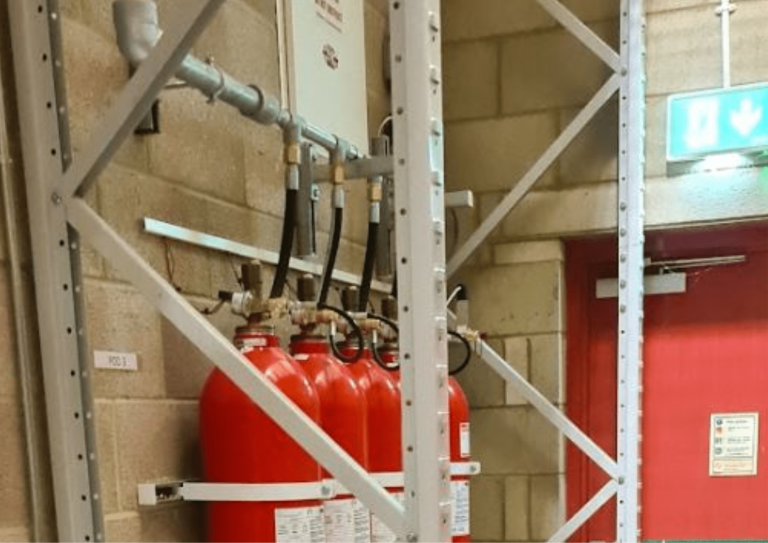
At Ardington Archives we utilise Argonite fire suppression systems in our Argonite Pods and BS 4971 Vaults, where we store our clients’ most sensitive and business-critical documents. But just what is this mysterious substance?
In brief, the name ‘Argonite’ is a registered trademark and brand name of Ginge-Kerr, a global leader in firefighting technology. It is an inert gas composed of 50% argon and 50% nitrogen. Also known as ‘Clean Agent’ due to the fact that it leaves no residue behind after use, Argonite works as an effective fire suppressant in enclosed spaces by replacing the oxygen in the air, thus smothering the fire. This is achieved in less than 60 seconds once the oxygen concentration falls below 15%.
Its use is governed by NFPA 2001 – Standard for Clean Agent Fire Extinguishing Systems. For more information on this standard, see the National Fire Protection Association webpage
In addition to being a highly effective fire suppressant, Argonite has several key advantages over its competitors:
- It’s environmentally friendly. It causes zero ozone depletion, has zero global warming potential, contains zero carbon dioxide and leaves behind zero post fire residue.
- It doesn’t make a mess. It is therefore suitable for use in areas where the use of water, foam or powder would be unacceptable (e.g. in an archive store, where water, foam and powder would clearly be likely to damage paper records). It also creates ‘minimal fog’ during discharge, which means that escape routes within the facility remain visible.
- It’s safe. It’s non-toxic and will not decompose or produce byproducts when exposed to flames. Furthermore, people can breathe Argonite at extinguishing concentrations without danger (that said, it is probably inadvisable to linger in a fire-affected area in order to sample it – speedy evacuation is highly recommended in such situations).
Fortunately, while we have invested in a state-of-the-art argonite fire suppression system, its ultimate value has never been put to the test in our storage facilities – a state of affairs we intend to maintain.




